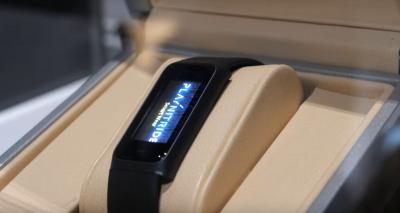Digitimes reports that PlayNitride raised $50 million and is ready to start trial production of micro-LED chips by the end of August 2019. PlayNitride will increase its headcount by 100 employees.
PlayNitride told Digitimes that it achieved a yield rate of 99.9% in its LED transfer (pick-and-place) process. Using mass repair technologies, the company is certain it can achieve commercial viability of its process. The company's mass transfer speed is 10,000 chips per second. This means that for a Full-HD (1920x1080) display it will take just over 10 minutes to transfer the LED chips. A 4K display will take just over 40 minutes.
PlayNitride is targeting the wearables, automotive and large-size TV markets, and is working with more than 10 potential customers. For the wearables market, the company has a strategic partnership with RiTDisplay and according to reports the two companies are in talks with Apple to supply future wearable displays. At SID DisplayWeek 2019 PlayNitride demonstrated a high-brightness, high-resolution passive-matrix wearable micro-LED display.

PlayNitride is working with both TianMa and CSoT towards automotive transparent micro-LED displays. At Displayweek Tianma demonstrated a 7.56" 720x480 (114 PPI) transparent Micro-LED prototype, which was developed together with PlayNitride on Tianma's LTPS backplanes. PlayNitride demonstrated the same display at its own booth. At the same event, CSoT showed a 3.3" transparent micro-LED prototype, also developed with PlayNitride.
In the large-size TV market, PlayNitride is reportedly supplying Samsung with the micro-LED chips and technologies used in Samsung's "consumer-level" micro-LED TVs.
In April 2018 Taiwan's Ministry of Science and Technology approved PlayNitride's application to setup a NT$500 million (US$17 million) production facility at Hsinchu Science Park.

